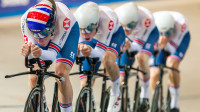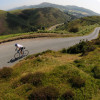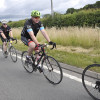The Threshold Test is an integral part of all the British Cycling Training Plans as it is used to calculate the heart rate training zones that are crucial for accurate pacing and optimal training. However, many other coaches and training manuals advocate testing for maximal heart rate or using generic age based formulae to calculate training zones from. So, why do we use threshold?
Testing for max is horrible
Pushing yourself to your genuine maximal heart rate is very painful and both physiologically and psychologically extremely difficult. In fact, there are credible theories that suggest that going to your true maximum might actually be impossible, with your body effectively having its own safety cut-off. You need to be incredibly motivated to push that hard and, if you are not quite up for it, your result will be significantly off.
We are not suggesting that the 30-minute Threshold Test effort is pleasant and, by the end, you should be on your limit but it certainly doesn’t require the all-out, no compromise effort of a maximal test.
Little things can make a big difference
If you are not properly rested or have an underlying bug or virus, which may not even manifest any symptoms, you won’t be able to get anywhere near to your maximum. However the sub-maximal effort of a Threshold Test is less affected by these factors, although you should ideally be well rested beforehand, and is therefore a far more robust test.
Threshold is better for novices
If you are fairly new to cycling, the prospect of pushing to your absolute maximum is both alien and intimidating. Although you might struggle to get the pacing of a 30-minute effort absolutely right, you will get a decent approximation and, with each subsequent test, your pacing and result will improve.
Threshold is more relevant to the majority of cyclists
Threshold represents a key and very familiar intensity for the vast majority of cyclists. It is your redline on a long climb or the intensity that you can hold for an extended effort on the flat. By testing for this figure and setting zones around it, this ensures that those key zones just above and below threshold, are as accurate as possible.
What about using formulae?
Formulas such as 220-age or variations that also factor in resting heart rate, are often recommended for calculating maximal heart rate and then setting zones from. Many heart rate monitors and cycling computers, which automatically calculate training zones, will also use these formulae. These formulae are generic and were gathered using unrepresentative non-athletic samples. The zones that they produce will be inaccurate and totally impersonal to you. It may be tempting to take the shortcut of skipping the Threshold Test but you will only be cheating yourself and not getting the most out of your training.















